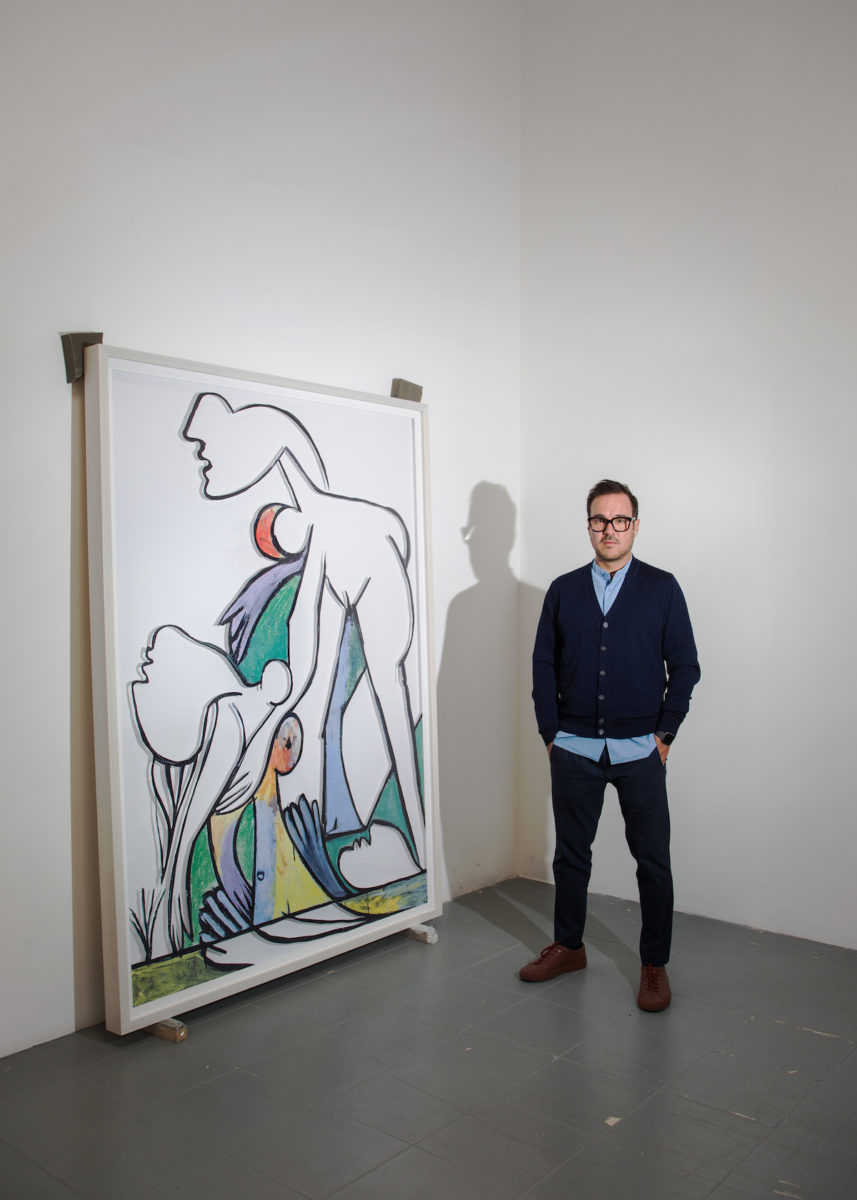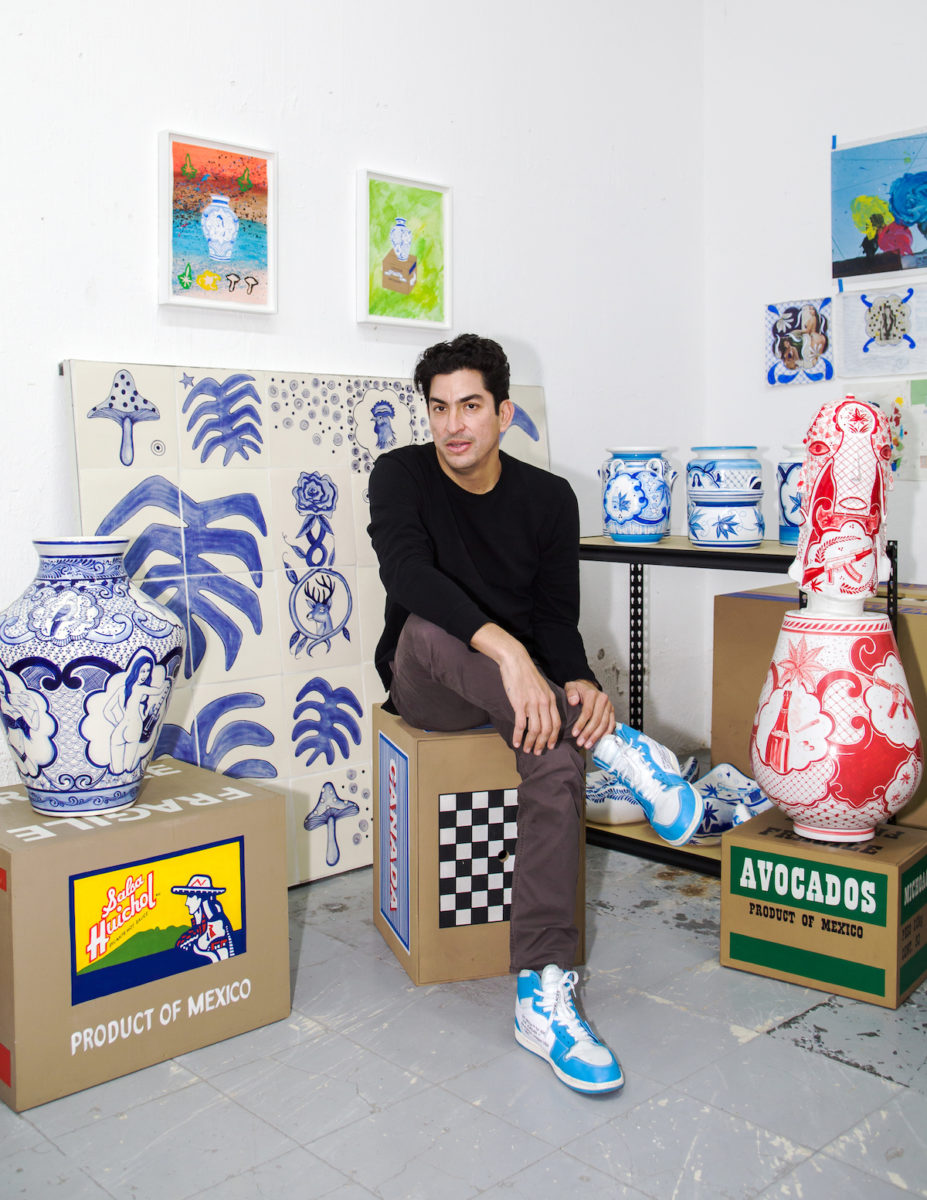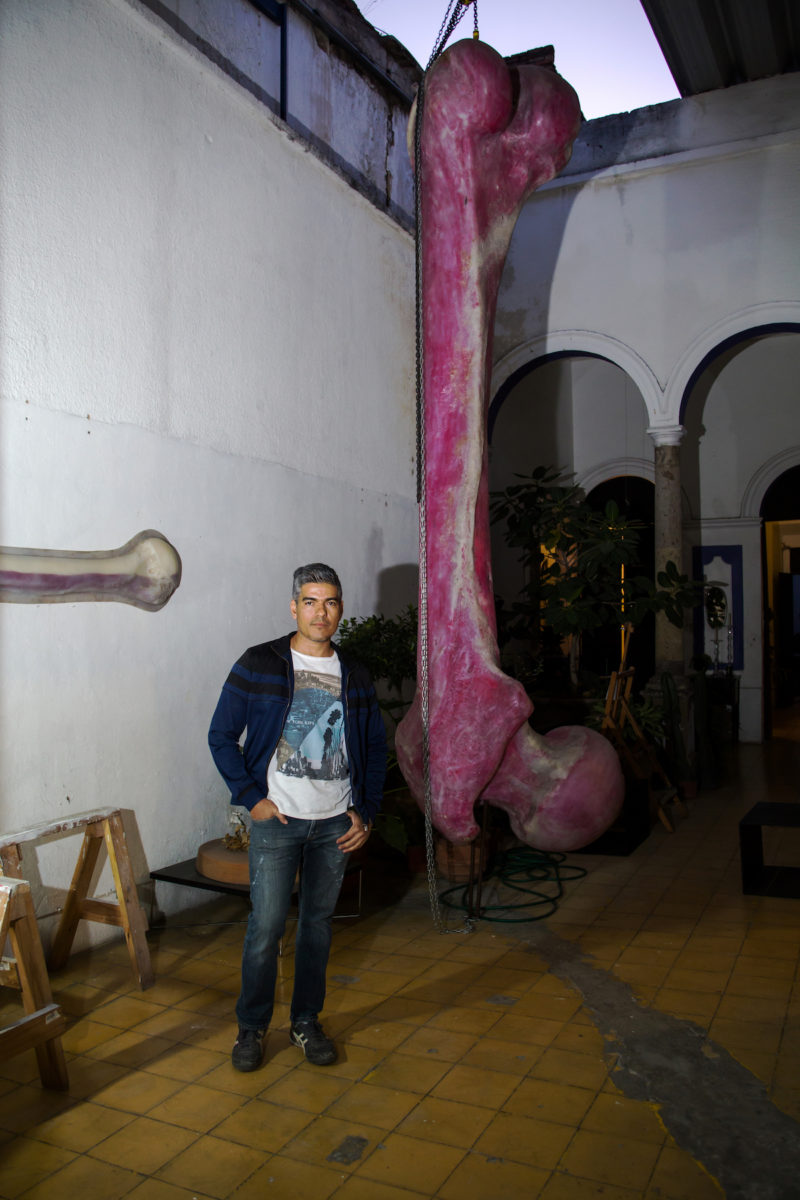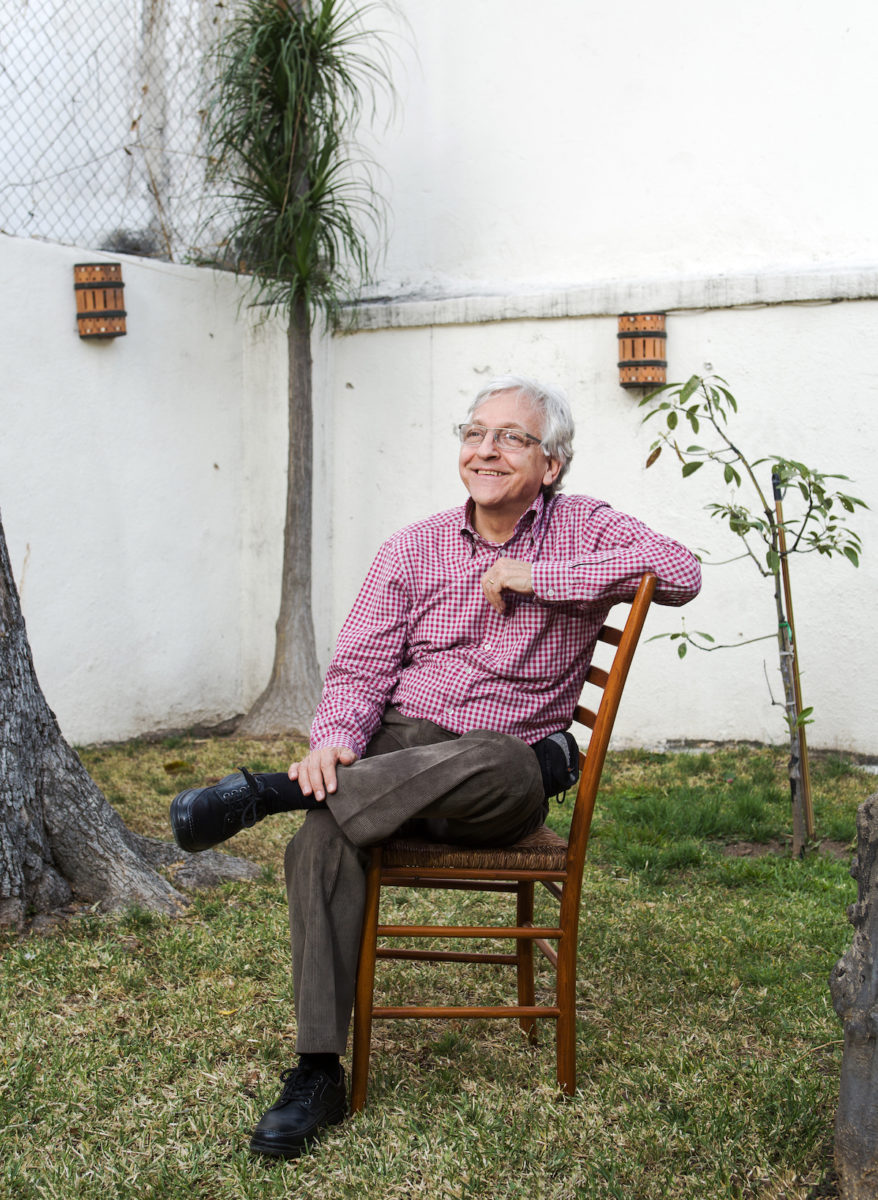February 2019 marked the third year of the PreMaco arts festival in Guadalajara, the capital of the state of Jalisco located about four hours northwest of Mexico City. As its name suggests, this festival is a precursor to the much larger Zona Maco festival in the country’s capital, which started in 2003 as the country’s premiere arts showcase, bringing in roughly 66,000 visitors a year and making Mexico City one of the world’s most exciting leaders in the arts.
But in the years since PreMaco began, Guadalajara has soared into the favor of the world’s artsy elite, bringing the rest of Mexico along with it. Whether a born-and-raised tapatío like sculptor Jose Dávila or a “reverse migrant” like Los Angeles–born ceramicist Eduardo Sarabia, these six artists embody the gravity of Guadalajara’s past and the promise of its future.
In his studio, sculptor Jose Dávila uses industrial materials like stone, glass, and metal to play with natural elements of physics, in his own way “translating life into the artwork, and the artwork into life.” “Balance is something that everyone looks for,” he says. “We are all always struggling to find the balance in ourselves, in all kinds of areas of our life. So this preoccupation naturally lands in the work.” One of his recent projects took him to Los Angeles, where he was commissioned by Los Angeles Nomadic Division (LAND) to create “Sense of Place,” an exhibition of public sculptures. What started out as a stone cube made up of several moveable pieces in West Hollywood Park was gradually dismantled, its parts inconspicuously placed in different contexts all over the city, often passing for a bench that people would sit on. “I wanted to try to cover, at least symbolically, [everywhere] from sea to mountains, from very private to very public.”
“We were interested in profiling the best of Mexican design for the world,” says Mexican curator and creative director Regina Pozo of her design firm Txt.ure, which showed at the Campamento design festival happening the same week as PreMaco. Their pieces modernize ancient techniques for a contemporary aesthetic. “Our designs are developed to rescue pre-Hispanic processes that are on the verge of extinction.” Pozo’s ultimate goal has always been for Txt.ure to embody the influence of a global brand while never compromising on what makes them distinctly Mexican. “We have so much historical heritage, and it’s important for designers over here... to use what we have,” she says. According to Pozo, Txt.ure is part of a growing movement of Mexican designers that prioritize collaboration with local artisans, and that have social responsibility at the center of their business. “To me, that speaks more to what Mexico can offer in terms of design solutions than probably any piece of carpentry or furniture.”
Muralist and painter Rocio Saenz says she always has a dialogue going on inside of her, searching for the “obsessions” in her life. “The obsessions principally [are] violence, power, and the relationships between the submissive and the leader,” she says. “I like to satirize social institutions. But always with humor, no? I need that humor.” Born in Chihuahua in the north of Mexico, Saenz has been living in Guadalajara for the last 17 years, working with galleries around the world from Germany to Canada. And though she sees herself as an independent creator, she recently worked on a project alongside like-minded artists that hit closer to home, meant to criticize the frequency of civilian disappearances in Mexico. “It’s a very delicate theme,” she says, though the works were rather indelicately placed in the Palacio de Gobierno, or as she calls it, “the place with the power inside.” Of the project she says: “We were trying to find the truth.”
Ceramicist Eduardo Sarabia was inspired by stories about his grandfather’s search for buried treasure in Sinaloa. His “narco series” of ceramics is largely based around his own search for the same gold, which he took up after his grandfather’s death—a journey that led him, among other places, to a church in Culiacán that was built “for the patron saint of drug trafficking.” For his most recent project, which he showed at Museo Universitario del Chopo in Mexico City, Sarabia created even more personal work. “I wanted to make a series about growing up in L.A., visiting my grandparents in Mazatlán, the 1981 Dodgers World Series,” he says, laughing but dead serious.
Walking into Guadalajara-born multimedia artist Rogelio Manzo’s studio is like walking into a very beautiful lab, where he brings what was once sentient back to life. For one of his projects, Manzo connects real horse bones and scaled models of human bones with “transparent flexible tubes where liquid is being transfused,” to mimic the circulation of blood. “[Mexico] is a family-oriented country—our relatives and friends never leave us, they never die... We keep visiting them as [though] they were alive in the cemeteries. I’m interested in exploring different paths of what death could be.”
Twenty-five years ago, French photographer Gaal Cohen moved to Guadalajara and worked his way into the local art scene. “Testigos” (Witnesses), a recent project of his, was shot in San Pablito, a neighborhood in Pahuatlán home to an Otomí-speaking indigenous community. The series documents artisans who make a special paper out of amate bark, onto which the images are printed.







